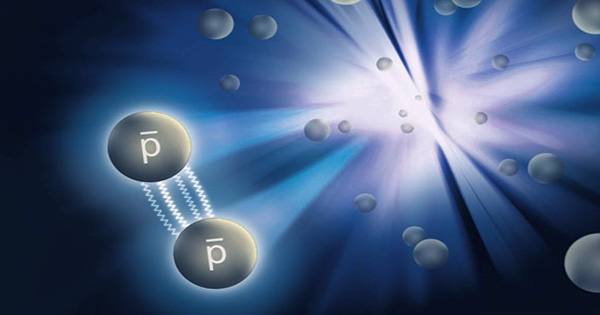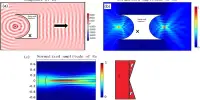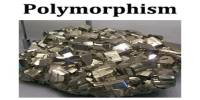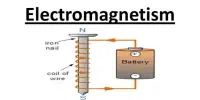In order to create technologically viable high-intensity light emitters based on colloidal quantum dot technology, a team from the Los Alamos National Laboratory has overcome significant obstacles. As a result, they have created dual-function devices that can function as both an optically excited laser and a high-brightness electrically driven light-emitting diode (LED).
According to a report in the journal Advanced Materials, this development is an important step toward the development of an electrically pumped colloidal quantum dot laser or laser diode, a new class of devices whose applications would include integrated electronics and photonics, optical interconnects, lab-on-a-chip platforms, wearable technology, and medical diagnostics.
“A quest for colloidal quantum dot laser diodes represents part of a worldwide effort aimed at realizing electrically pumped lasers and amplifiers based on solution-processable materials,” said Victor Klimov, a scientist in Los Alamos’s Chemistry division and the team leader on the research. “These devices have been pursued for their compatibility with virtually any substrate, scalability and ease of integration with on-chip electronics and photonics including traditional silicon-based circuits.”
The quantum dot layer functioned in the team’s new gadgets as an electrically actuated light emitter, similar to a conventional LED. The devices did, however, achieve previously unheard-of brightness levels of more than a million candela per square meter thanks to exceptionally high current densities of more than 500 ampere per square centimeter (candela measures luminous power radiated in a given direction). They are ideal for applications like daylight displays, projectors, and traffic lights because of their brightness.
Additionally, the quantum dot layer exhibited strong net optical gain and was an effective waveguide amplifier. With a completely working stack of LED-type devices that included the necessary charge transport layers and other components for electrical pumping, the Los Alamos team was able to achieve narrow-band lasing.
In particular, the device’s charge injection architecture must be capable of generating and sustaining very high current densities required for laser action. The same device must also exhibit low optical losses so as not to suppress gain generated in a thin quantum dot active medium.
Namyoung Ahn
This development pave the way for the much awaited electrical pumping demonstration of lasing, which will enable the complete commercialization of colloidal quantum dot lasing technology.
Colloidal quantum dots
For making laser devices, such as laser diodes, semiconductor nanocrystals or colloidal quantum dots are appealing materials. Chemical processes carried out at moderate temperatures can prepare them with atomic precision.
Quantum dots also show discrete atomic-like electronic states, whose energies directly rely on particle size, due to their minuscule dimensions, which are analogous to a natural extent of electronic wave functions.
This consequence of a so-called “quantum-size” effect can be exploited to tune the lasing line to a desired wavelength or to design a multi-color gain medium that supports lasing at multiple wavelengths.
Low optical gain thresholds and decreased susceptibility of lasing characteristics to changes in device temperature are further benefits gained from a distinctive atomic-like spectrum of quantum dot electronic states.
Innovation design for solving electrical pumping challenges
Short optical pulses have been used in the majority of quantum dot lasing studies to excite an optical gain medium. It is significantly trickier to make electrically driven quantum dot lasing a reality. The Los Alamos research team took a significant step in the direction of this goal with their new devices.
“One challenge lies in the area of electrical and optical device designs,” said Namyoung Ahn, a Laboratory director’s postdoctoral fellow and a lead device expert on the quantum dot team. “In particular, the device’s charge injection architecture must be capable of generating and sustaining very high current densities required for laser action. The same device must also exhibit low optical losses so as not to suppress gain generated in a thin quantum dot active medium.”
To boost optical gain, the team developed new nanocrystals that they dubbed “compact compositionally graded quantum dots.”
“These novel quantum dots feature suppressed Auger recombination due to a built-in compositional gradient and simultaneously exhibit a large gain coefficient when assembled in a close-packed solid used as an optical gain medium,” said Clément Livache, a postdoc on the quantum dot team who performed spectroscopic studies of the fabricated devices. “This helps realize net optical gain in a complex electroluminescent structure wherein a thin, light-amplifying quantum dot layer is combined with multiple light-absorbing charge-conducting layers.”
To facilitate light amplification, the researchers also reduced optical losses in their devices. Particularly, the optically lossy metal-like materials in the charge injection architecture were removed and replaced with correctly tuned low-absorptivity organic layers.
Additionally, scientists designed a device cross-section profile to simultaneously increase optical field strength in the quantum dot gain medium and decrease it in highly absorptive charge transport layers.
Finally, an optical cavity produced as a periodic grating that was integrated into one of the device electrodes was added to the developed devices to enable laser oscillations. This grating served as a “distributed feedback resonator,” cycling light in the quantum dot layer’s lateral plane and enabling multi-pass amplification.
The final challenge
The lasing effect was attained employing optical excitation. Electrical pumping lasing was not seen due to the device’s performance being compromised by the considerable heat produced by a passing current. To show electrically driven laser oscillations, this remains the last obstacle to overcome.
A few years ago, ultrafast Auger decay, insufficient current densities in quantum dot LEDs, and challenges integrating electroluminescent and lasing functionalities in a single device led to the widespread belief that electrically pumped colloidal quantum dot lasers were not conceivable.
The findings of the Los Alamos quantum dot team show that most of these issues have workable solutions, indicating that a functional quantum dot laser diode is just around the corner.
















